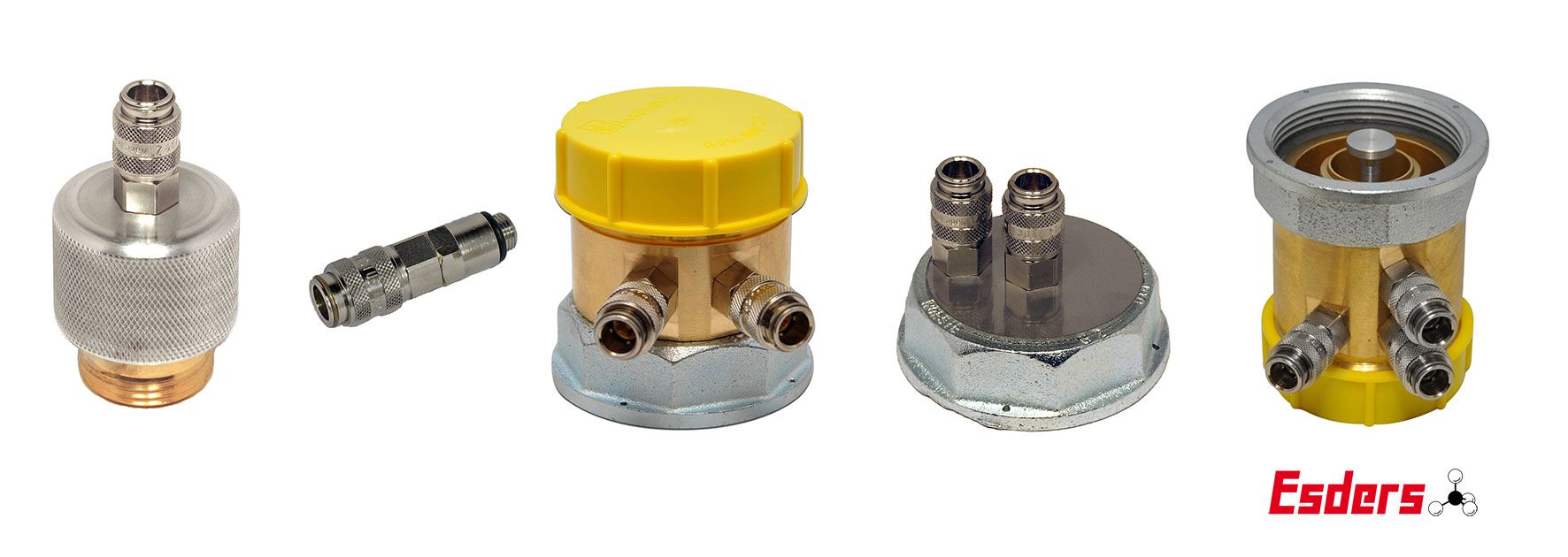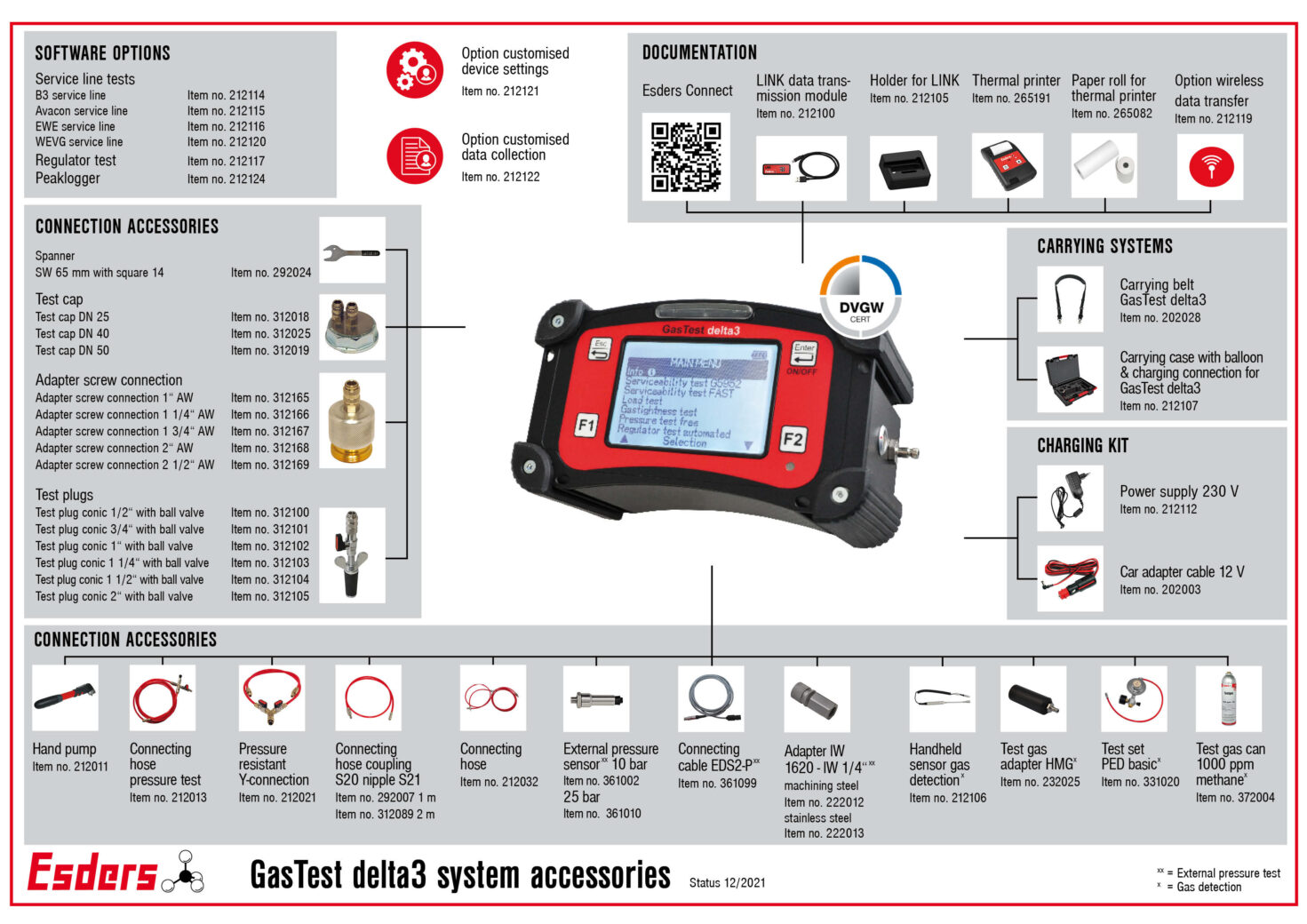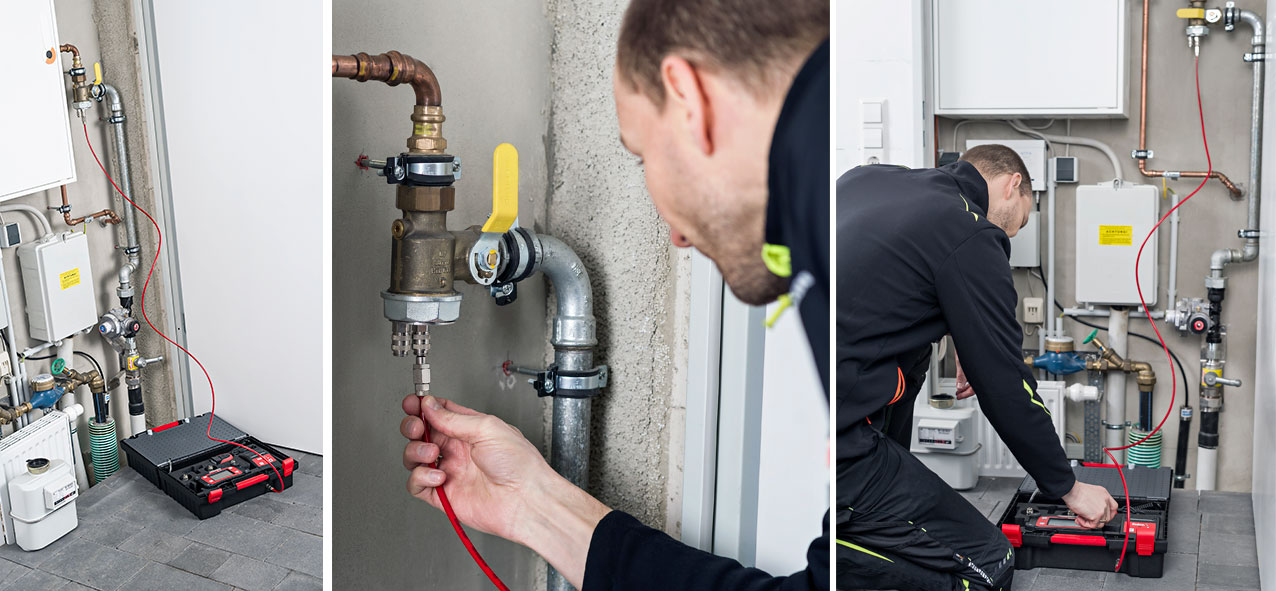Table of Contents
Openings in gas installations
The subject of line openings in gas installations has been a controversial topic for a long time. In essence, it is mostly about the question of whether and in what form they are permissible. Recently, a detailed technical article on this subject was published in the German magazine IKZ-Haustechnik (issue 09/2021), which we can highly recommend and therefore take up and summarise here. In our summary we have concentrated on the area of measuring and testing openings and have not touched on the subject of ventilation openings, which was also dealt with in the magazine.
Gas installations should have as few openings as possible in order not to provide an attack surface and to be protected from unauthorised access. Nevertheless, a suitable connection of the measuring device to the gas installation is required for the following tests according to TRGI 2018 or DVGW G 495 (A):
- Load and leak test on newly laid pipes
- Leakage quantity measurement as part of a serviceability test
- Function test on medium-pressure regulators and, if necessary, low-pressure regulators
- Outlet pressure measurement on low-pressure regulators
- Measurement of the operating pressure of the pipe network
In which cases, at which points and for which measurements can the measuring device be connected to the pipe system?
Since 2000, the TRGI has required that test openings upstream of the gas pressure regulator must be excluded. This means that only openings or connection options at or behind the gas pressure regulator can be considered. The following variants are conceivable:
- For single-pipe regulators: Use of an adapter between the regulator fitting and the gas pressure regulator.
- For straight-through regulators: Use of an adapter for mounting on existing test openings in or on the gas pressure regulator (often provided in the factory).
- Regardless of the regulator type: Use of an adapter in the minimum measuring connection on the regulator fitting (if available).
- Use of an adapter on the gas meter fitting without test port (when dismantling the gas meter)
- Use of an adapter on the gas meter fitting with test port (gas meter does not have to be dismantled)
In the picture you can see a small list of adapters. They are available in various designs and sizes.

From our point of view, variant 2 is not suitable for initial pressure measurements or functional tests on gas pressure regulators due to the design-related bore diameter of ≤ 1 mm.
Variant 1 or 3 is suitable here or – depending on the spatial installation of the gas meter and distance to the gas pressure regulator – variant 4.
Load and leak tests as well as a leak quantity measurement can be carried out on variants 1-5. However, a load and leak tests are usually carried out on newly laid pipes before gas pressure regulators and gas meters are installed, so that not all options 1-5 remain available.
Safety and gas openings
The advantage (e.g. when using a mini shut-off valve) is that the gas supply is maintained and thus the amount of work required for shutting down and restarting is significantly reduced.
It turns out that specific test openings in the pipeline system are usually not necessary. If this should nevertheless be the case for operational reasons (e.g. openings with a larger diameter), these must be passively secured (protection against interference) if they are located in “generally accessible areas”.
The most effective passive protective measure is still the location of gas pipeline systems in spaces that are not “generally accessible”. If this is not possible, pipe ends or outlets should generally be avoided.
Extensive connection accessories and adapters for tests according to TRGI 2018 or DVGW G 495 (A) can also be found here.


